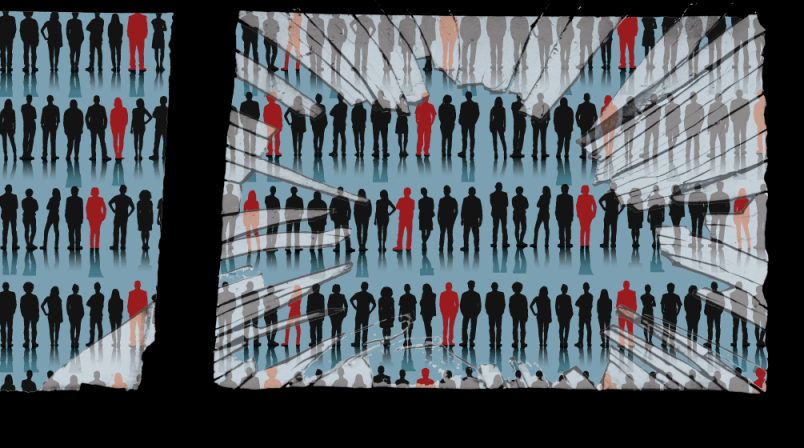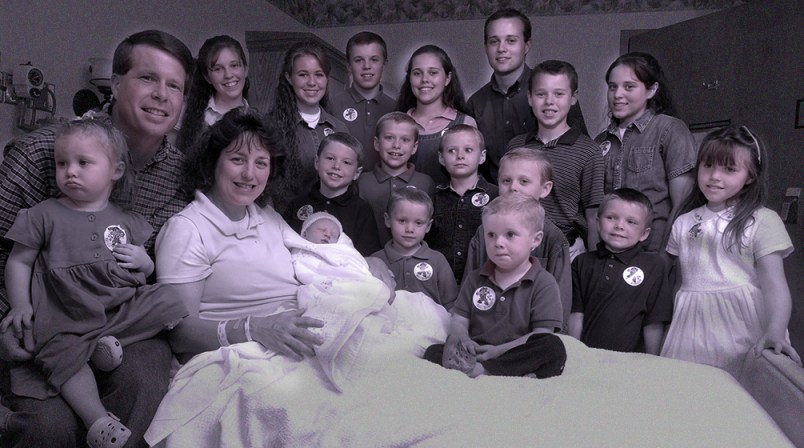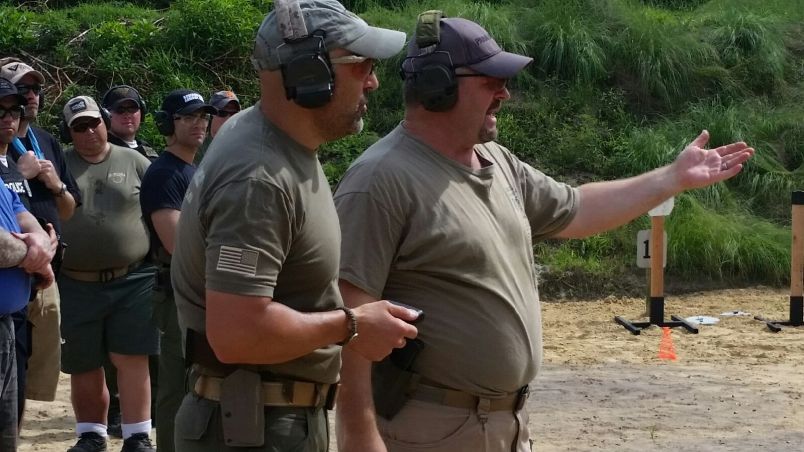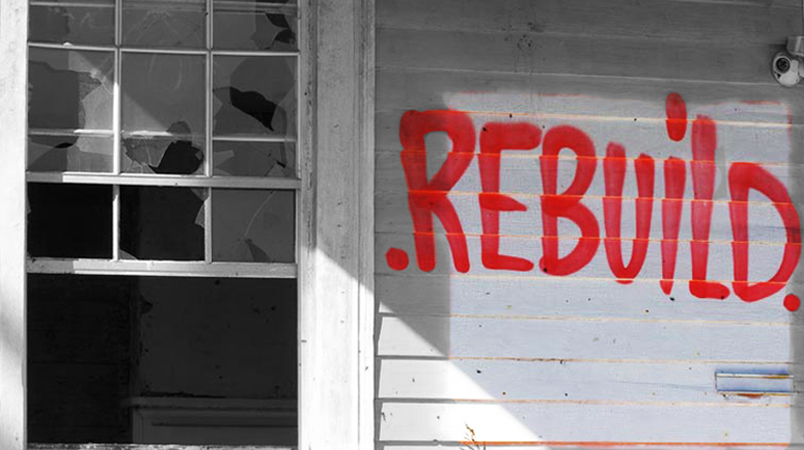Christopher Howard never thought he would see the inside of a jail cell.
Growing up in a “dysfunctional family” in Gainesville, Florida, with an alcoholic uncle, a drug-addicted mother, and a wheelchair-bound grandmother, Howard dreamed of moving to New York and making it in the film industry. After a few unsatisfying years at Gainesville’s Santa Fe Community College, he dropped out and moved to a town in New Jersey, right across the Hudson River from Manhattan.
Soon enough, Howard, a tall African-American man with a deep voice and hazel eyes, began booking modeling and acting gigs and working as a waiter at Le Pain Quotidian to keep a steady income coming in. He quickly moved up the ranks, and now, at 30, owns his own production company, lives alone in a two-bedroom apartment, and has an eleven-month old daughter, Lian, whom he dotes upon. From his perspective, he’d beaten the odds. He’d left Florida and built the life he wanted.
But one afternoon this May, Howard found himself sitting behind bars at the NYPD’s 5th precinct in Chinatown.
“I was terrified,” he said, sipping a Blue Moon at Borough, a restaurant a few blocks from his apartment in Brooklyn’s Clinton Hill. “I just have never wanted to be in that position at all in my life.”
Howard had been on a production job, driving a van to cross the Manhattan Bridge into Brooklyn, when he was pulled over for running a stop sign. The sign was obscured by a double-parked car and he hadn’t seen it, as he explained to the officer who stopped him. The cop was sympathetic and told him he just needed to run his license before he could let him go. Moments later he returned and told Howard he had an open arrest warrant for an unpaid traffic ticket and would need to be taken to jail. Despite protesting that he had paid all outstanding tickets when he’d reinstated his license in Florida several years before, Howard was handcuffed next to the van, on a busy stretch of Canal street, and taken away in a squad car.
Howard’s story is surprisingly common. There are currently 1.2 million arrest warrants open in New York City. Many of the people who have them have no idea that these warrants exist, and many of the warrants themselves date back years, even decades.
The vast majority of warrants occur when people who receive summons for minor violations, such as riding a bike on the sidewalk or drinking a beer in public, fail to appear in court. Once they miss their court date, a bench warrant is issued for their arrest, meaning any interaction with a police officer, in which their ID is run and the warrant shows up, results in them being handcuffed and taken to the nearest precinct. For reasons ranging from lost tickets to lack of funds to pay fines to simple neglect, a full 40 percent of those ticketed failed to appear in court last year. These open warrants can interfere with their ability to find jobs, receive public housing, and achieve legal immigration status.
After more than two decades of unchanged policy, New York City may finally address this defective system. Police reform groups, City Council members and even Police Commissioner William Bratton—the architect of New York City’s “broken windows” crime-fighting strategy—have acknowledged the need to reconsider how low-level offenses are processed by the courts. Amnesty has emerged as a starting point. The Brooklyn District Attorney recently piloted a program, Begin Again, which allows New Yorkers with open warrants to have their cases cleared at a church or other community space, bypassing the traditional court system entirely.
Surprisingly, Bratton voiced support for this type of policy, which has long been pushed by reform groups.
“It would be great to get rid of a lot of that backlog,” Bratton said in an interview with the Associated Press. “It’s not to our benefit from a policing standpoint to have all those warrants floating around out there.”
Amnesty would allow people to pay their fines and have their records cleared without the burden of going to court. It would mean that someone like Christopher Howard wouldn’t have ended up behind bars for a crime he hadn’t even known he’d committed.
As Councilman Antonio Reynoso, co-chair of City Council’s Progressive Caucus, put it in a phone interview: “I don’t think anyone’s freedom should be toyed around with so lightly.”

The tremendous number of open warrants in New York City is one of many unintended consequences of “broken windows,” a policing strategy first implemented in 1994 under Mayor Rudy Giuliani and then-Commissioner Bratton to address a spiraling crime rate. Influenced by a 1982 article published in The Atlantic by social scientists James Wilson and George Kelling, the broken windows theory argues that aggressively pursuing minor, so-called “quality of life” offenses prevents the kind of community disorder that allows more serious crime to flourish.
Twenty-one years later, with those same policies firmly in place, there is no disputing that New York is now one of the safest big cities in the country. According to Commissioner Bratton’s annual policing report, issued in April, the once-dangerous, sprawling subway system saw “fewer than six crimes a day on average.”
But a heated debate rages about the extent to which “broken windows” policing deserves credit for this welcome outcome. Commissioner Bratton insists that the aggressive pursuit of these crimes is crucial to maintaining law and order in our newly cleaned-up city, and that retreating from this strategy could cause crime to skyrocket. In a City Journal article from January, co-authored with Kelling, Bratton writes, “A neighborhood where minor offenses go unchallenged soon becomes a breeding ground for more serious criminal activity and, ultimately, for violence…. Thousands of police interventions on the street” have “restored order and civility across the five boroughs.”
Critics of this strategy argue that crime declined drastically across the country over the last two decades, even in cities that don’t use broken windows techniques, and that devoting police and court resources towards pursuing and processing minor offenses is wasteful. They insist that there’s no proof that people who drink a beer in the park or hop a subway turnstile are ever going to commit more serious crimes, and point to studies proving the damaging psychological effects of exposing people to the criminal justice system for such minor infractions.
Bob Gangi, director of the Police Reform Organizing Project, put it bluntly: “It’s really fucked up,” he says. “In addition to being blatantly racist and immoral, it’s counterproductive, it’s wasteful, it’s not a serious crime-fighting strategy.”
Broken windows and other signs of disorder are also signs of poverty, and opponents of the strategy say it is a way of criminalizing poor, marginalized communities with little ability to push back politically against intrusive policing. “The neighborhoods where people can least afford it are where all the fines are happening,” Reynoso says.
Commissioner Bratton and NYPD officials insist they are merely enforcing the law in areas with the highest rates of crime, which happen to be predominantly minority communities in the outer boroughs. Still, the sheer scale of the effort is remarkable: In stark contrast to the annual rate of only a few thousand criminal cases a year, the NYPD issued 458,000 quality of life summons in 2014. The list of summonsable offenses is staggering. You can be fined for walking between subway cars, putting a backpack on a subway seat, or using a friend’s MetroCard to enter the subway. Loitering (even in front of your own building), being in a park after 1 a.m., and jaywalking can all result in court summons, depending on the officer’s discretion.
Advocates for reform make a convincing case that the same nonviolent offenses are essentially decriminalized in some areas and aggressively pursued in others. Between 2008 and 2011, police issued an average of eight bike-on-the-sidewalk summonses per year in the tony, mostly-white Brooklyn neighborhood of Park Slope. During the same period, 2,050 were issued per year for the same offense in the poor, mostly-black neighborhood of Bedford-Stuyvesant. A New York Civil Liberties Union calculation of race data on summons forms found that around 81 percent of the 7.3 million people who received court summons for minor infractions between 2001 and 2013 were black and Hispanic.
Councilman Rory Lancman, who represents the 24th district in northern Queens, supports broken-windows enforcement; in fact, he thinks there’s not enough of it. He just thinks it should be done in a fairer way, and acknowledges that the racial disparity is deeply problematic. “It’s this belief that if we let the black and brown people have some slack—have the same slack that we give to white people—all hell will break loose,” he says. “There’s something visceral about the desire and need to try to control black and brown people.”

Manhattan Criminal Court is housed in an imposing marble building on Centre Street that occupies almost an entire city block. Adjacent to the Manhattan Detention Complex—known colloquially as “the Tombs”—the towering white structure is an architectural testament to the authority of the law. Inside, arrestees are brought into courtrooms to appear before a judge. The inner sanctum, where the judge sits, is crowded with public defenders, officers, and bailiffs, chatting and passing each other manila envelopes stuffed with paperwork. Public defenders meet with arrestees in booths on one side of the courtroom, while officers and those waiting for loved one’s cases to be heard sit in low wooden benches facing the judge’s stand. The benches are engraved with hastily scratched words: “Willie,” “Jay,” “Chris,” “Fuck NYPD.”
Summons court may be inconvenient, but criminal court is a bona fide ordeal. The people appearing before the judge have been held for several hours or even overnight. Some are repeat offenders who have been arrested on felony charges like armed robbery or possession of a deadly weapon. But many others, brought in because of open warrants, have never been arrested before. When they walk up to speak to the judge, their handcuffs are removed, but many keep their hands crossed behind their backs as if they were still bound.
Several of the people interviewed for this story didn’t quite seem to know the boundaries of the law: what offenses they could be arrested for, whether their tickets had left them with open warrants, or what the statute of limitations was.
On a recent Wednesday, Marcus Green, a skinny African-American man with tattoos running up his forearms, was leaving court after spending the night and much of the day in jail. Green had been arrested for a bench warrant when he was caught smoking a blunt on the stoop of his building on west 131st Street. He said he was unaware that any warrant existed, or that smoking marijuana in public was still an arrestable offense. (NYC decriminalized the possession of less than 25 grams in 2014, but smoking it in public remains illegal.)

“I didn’t think I had a warrant for anything, but I still ended up down here,” Green said. “Okay, so I’m sitting outside smoking. It’s late at night. I’m not making any noise. I’m just enjoying the weather. But there’s gunshots going off uptown. You don’t go uptown; you come bother me over a blunt.”
Most of the defendants who appeared before the judge that day shared Green’s demographic background: young, non-white and working-class. But more privileged New Yorkers get caught up in the system, too.
Mike*, a white 31-year-old film editor who has a mop of curly bleached blonde hair, believes his arrest this summer was the result of a court processing error.
“That’s a shitty way to go to jail,” he says.
Last fall, Mike mailed a $25 personal check to the court after being ticketed for carrying an open container of beer outside Bushwick’s Morgan Avenue L station. (Fines for open containers and public urination, two of the most common offenses, can be paid by mail). He researched the payment details online, and made sure to write the ticket number on the envelope and check like he was supposed to. But in June of this year, he was arrested by undercover cops at the Marcy Avenue J station after a friend let him in through the emergency exit gate. The reason? A check of his driver’s license turned up an open warrant for the unpaid drinking ticket.
Despite explaining to the officers that he’d already paid the fine, he was taken first to the 73rd precinct at Broadway Junction in Bed-Stuy, then to the Detention Center in downtown Brooklyn. He spent the next 12 hours behind bars, being transferred from cell to crowded cell as night turned to morning. The jail population, he said, was “.001 percent white.”
Some of the defendants were aggressive and shouted at the guards, or at each other. One, who claimed to be withdrawing from methadone, rattled the bars of the cell screaming for a cigarette, and at about 3 in the morning, an older alcoholic man went into a seizure from alcohol withdrawal. Blood dripped from his mouth onto the cell floor.
Mike was released with an Adjournment in Contemplation of Dismissal, or ACD, which means that his case will be dismissed as long as he stays out of trouble for six months. Still, he calls his time in jail “emotionally and physically” draining. “I wouldn’t want anyone to have to go through the experience I did.”

The Police Reform Organizing Project (PROP) is run out of the sprawling, paper-strewn Upper West Side apartment of its director, Bob Gangi. A genial, bald Italian from Queens, Gangi met me at the front door wearing a PROP t-shirt with the group’s signature handcuff logo, and accompanied by his beloved white Lhasa Apso puppy, Harry. Since founding PROP in 2011, Gangi has paid close attention to the way summonses are issued and misdemeanor arrests are processed in New York City. What he’s found, he says, is a “discriminatory and abusive” method of policing that amounts to “institutionalized bullying.”
“What you see cops doing on television, that’s what we want cops to do,” Gangi said, scratching Harry behind the ears. “We want them to investigate serious crimes, devote their energies to catching people who are dangerous and predatory and get them off the streets…We are not interested in modifications or clipping around the hedges.”
Gangi points to the three-week period in late December and early January when the NYPD engaged in a force-wide slowdown, following the fatal shooting of two NYPD officers, as an example of the kind of policework he believes should be prioritized. During the slowdown, arrests declined by 66 percent and summonses by 90 percent. And many believe the city was better for it. Gangi says there was no report of any police officer who engaged in the work stoppage not intervening in a serious crime.
The NYPD’s press office and the Patrolman’s Benevolent Association, the largest police union, did not respond to multiple requests for comment for this article.
What concerns Gangi, and many who oppose the aggressive enforcement of broken windows, is that it disproportionately affects the poorest and most vulnerable residents of the city, including ethnic minorities, mentally ill people, sex workers, street vendors and the homeless. This in turn damages the already strained relationship between the police and marginalized communities. People who are suspicious of law enforcement are less likely to appear in court to resolve their tickets, and therefore more likely to be issued bench warrants.
“This is not John Dillinger out on the lam,” says Nancy Fishman, a project director at the Vera Institute of Justice. “You have a number of people arrested for low-level offenses who are in fragile housing situations, who are mentally ill, who have lives that are not easily placed in datebooks so they miss dates.” Then, once they do, “they’re afraid to show up in court because they think they’re going to be arrested and put in jail.”
Ulises Martinez, an undocumented immigrant from the Mexican state of Guerrero, can relate. Back in 2000, when he was 17, he and a few friends were arrested for smoking a joint in the doorway of a building on 14th street. He went to two court-appointed days of community service, but missed the third because he needed to call in for his job as a delivery boy. Going to court already made him nervous because of his undocumented status, and he figured he could just avoid getting in trouble with police again. Unbeknownst to him, after missing the third appearance, a warrant was issued for his arrest.
On a recent June morning, the 32-year-old was stopped by NYPD officers after asking for and receiving a free swipe on a stranger’s MetroCard at Hunt’s Point station in the Bronx. They arrested him on the spot after a check of his ID turned up a bench warrant from the marijuana arrest 15 years earlier.
After a day in jail, a newly-released Martinez sat on the steps outside Manhattan Criminal Court, breathing in the early summer air. He wore thick-framed glasses and an Old Navy Athletics t-shirt, his long hair tied up in a braid. As the sky above the courthouse turned purple, he talked in Spanish about coming to the United States as an unaccompanied 14-year-old to meet his father in Queens, and the constant fear of living as an immigrant without papers.
“I was terrified,” Martinez said about his arrest that morning. “I thought they were going to send me back to Mexico. That’s what happens when they arrest you and you’re undocumented.”

Amnesty for open warrants offers one of the most feasible and politically palatable police reforms, uniting those who want quality of life crimes to be enforced and those who want immediate changes. It retains the principle that offenders are accountable to the courts, helps alleviate an overwhelming administrative backlog, and doesn’t dictate how the police should treat minor infractions in the future—a far more complicated conversation.
While Bratton and Mayor Bill de Blasio’s stated support for such policies is promising, any amnesty effort would have to be approved by New York City’s five district attorneys and the Office of Court Administration (OCA), which oversees the cases themselves.
“This is a very sensible way of trying to clear the backlog of cases,” Councilman Lancman says. “But I don’t think Commissioner Bratton can just decide to hit a button and eliminate arrest warrants.”
There are alternatives, some already in motion. In June, the office of Brooklyn District Attorney Kenneth Thompson held an event called Begin Again at Clinton Hill’s Emanuel Baptist Church, in cooperation with local clergy, the Legal Aid Society, OCA, and the NYPD. More than 1,000 people with open warrants came from all five boroughs to meet with attorneys and plead before a judge. 670 had their records cleared.
The event was such a success that Thompson plans to replicate it in other Brooklyn neighborhoods, and sent a letter to de Blasio urging his support for the plan. Similar programs have already been successfully implemented in other major cities, including Atlanta and Tulsa.
Combined with recent reforms to summons court, advocates say amnesty could make a significant difference in how minor violations are processed. It would mean fewer people would have to grapple with the psychological damage of being jailed without warning.
Christopher Howard, the producer arrested for not paying a parking ticket, recalls the experience this way: “I don’t like to be out of control. To be in a situation where you can do nothing, no matter how much you want to—it really fucked with my head.”
As Howard talked, a torrential summer downpour flooded the street outside. The restaurant owner kept the windows flung open, turning up the R&B pumping over the stereo to cover the sound of raindrops hitting the pavement.
“To have your freedom taken away even for an hour is a really horrible feeling,” he continued. “I would have loved to spend the rest of my life saying I’d never seen the inside of a cell before.”
*Mike preferred not to use his full name to avoid any possible retaliation from employers.






